[2010-04-28] Tractor seat stool
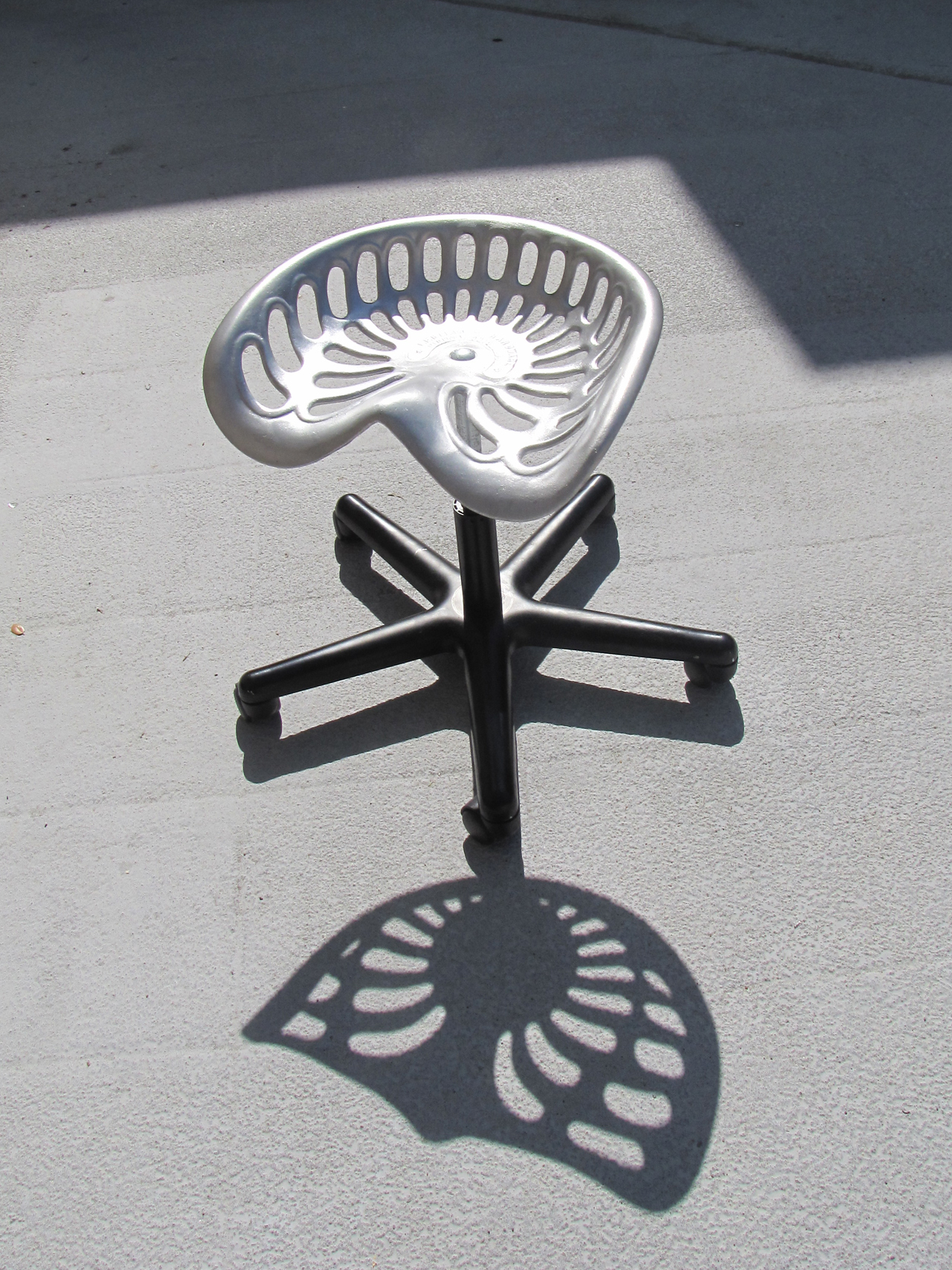
Inspired by Achille Castiglioni's famous Mezzadro tractor-seat stool, shown below, I have long admired the functional beauty of old-timey metal tractor seats, also called "implement seats." Traditionally, of course, these were made of steel, but independent-living outfitters Lehman's offers a cool modern-day version in non-corroding cast aluminum.
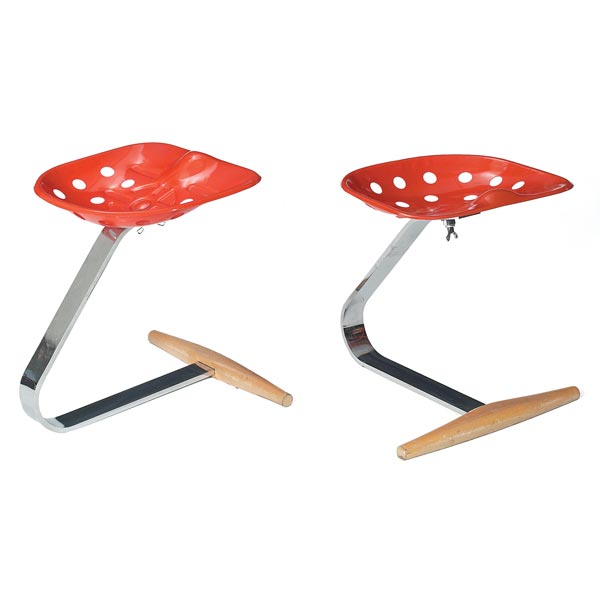
I requested and was given one of these cast aluminum tractor seats last Christmas. My original plan was to re-make Castiglioni's stool on the cheap. As cool as it is, it carries a "designer pricetag" and can cost hundreds or even thousands of dollars. After a few months of fiddling with it, however, I realized that accurately bending, heat-treating, and finishing the steel bar in Castiglioni's design was beyond my tools and my available time.
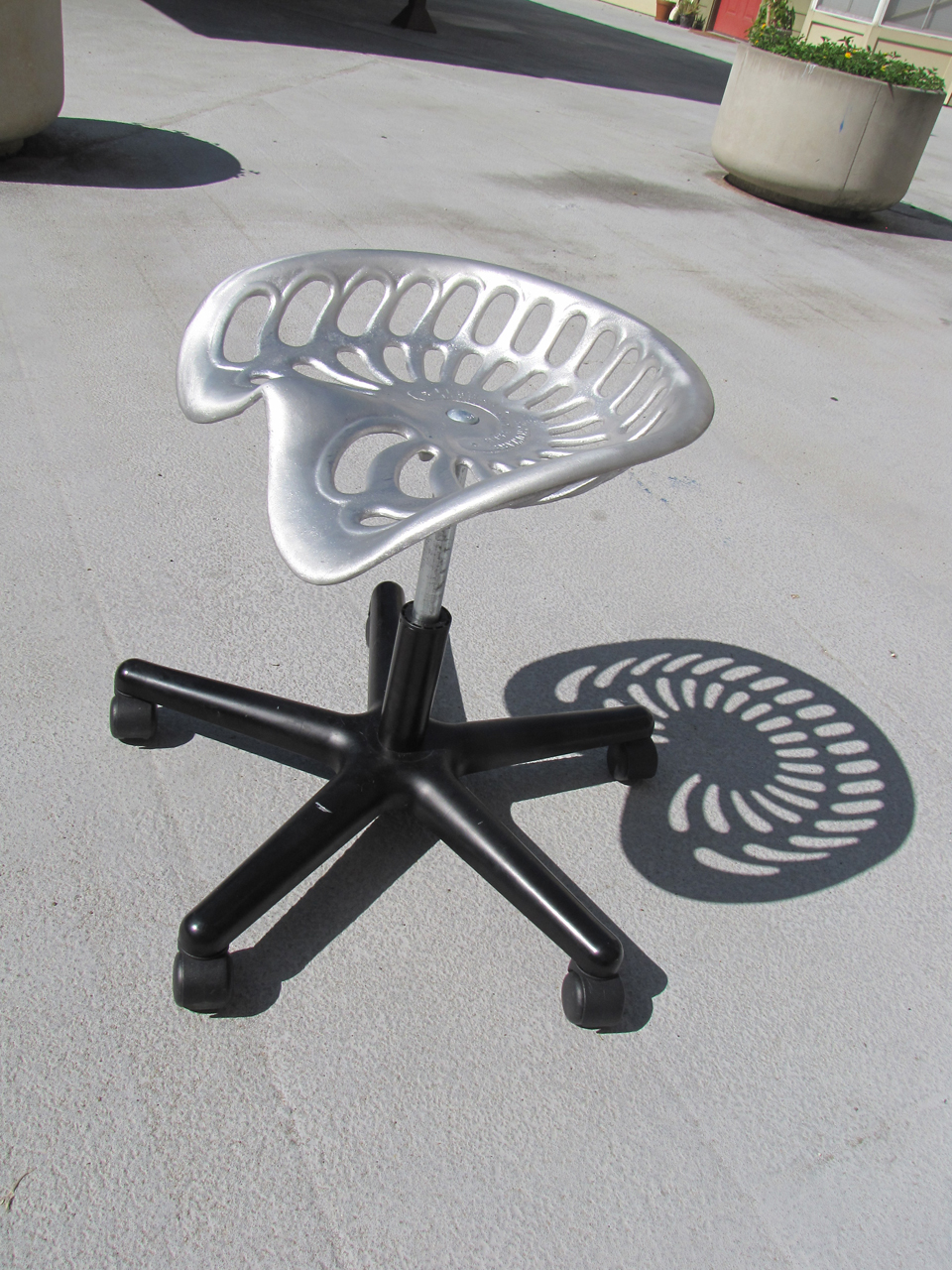
So I opted for this ready-made solution. I went down to Austin's awesome surplus office equipment dealer TOPS and picked up a cast aluminum office chair base, complete with casters and vertical stem with intact bushings, for $5 cash. I picked it out of a giant pile they had lying in a corner of their warehouse.
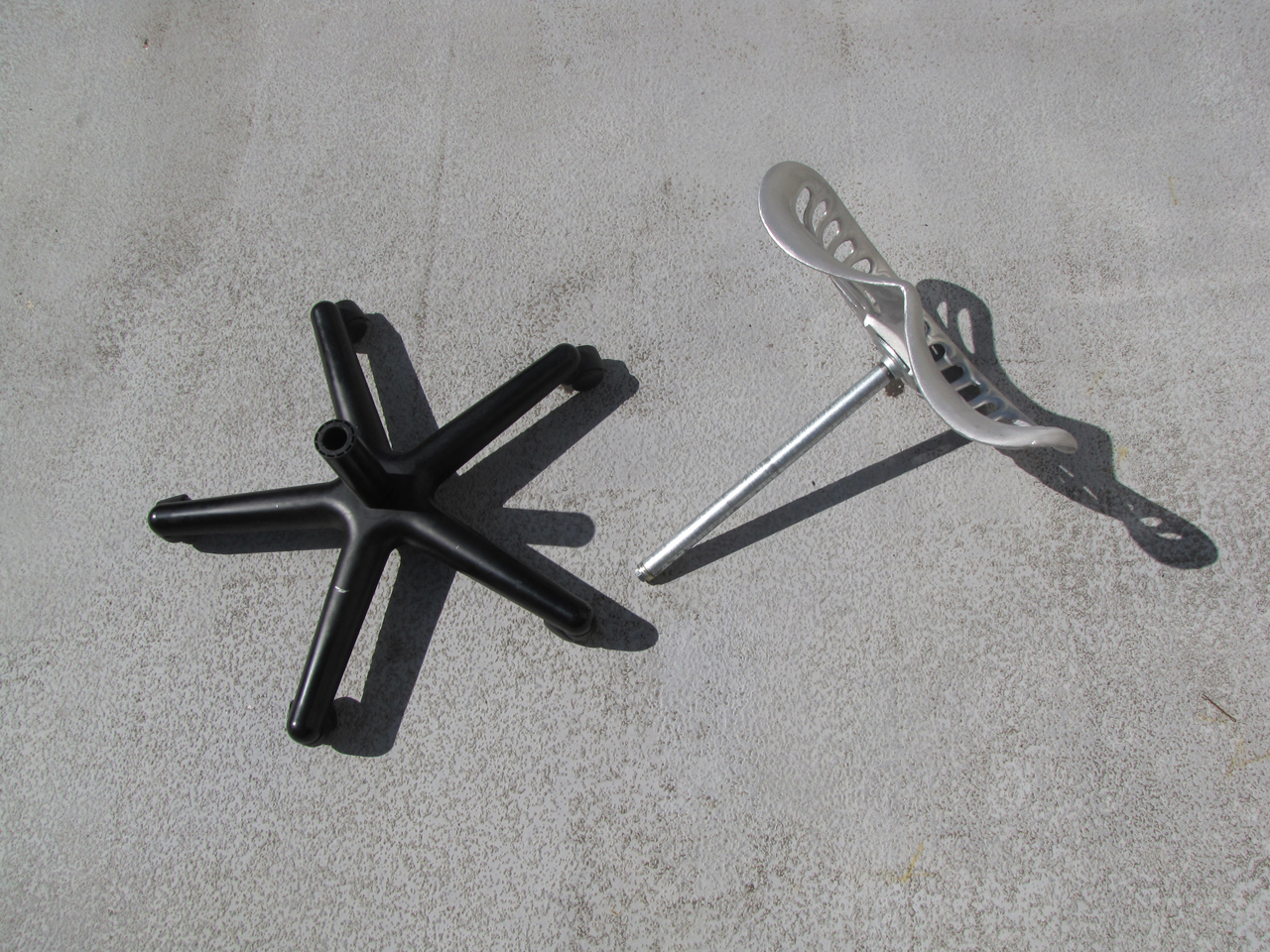
A bit of experimenting revealed that the outer diameter of nominial 3/4" galvanized iron pipe fit the bushing in the chair base almost perfectly. I monkeyed around with the idea of including a spring somewhere to give the stool some "bounce," and also with the idea of including a threaded telescoping junction so it would be height-adjustable, but in the end decided on the minimalist approach: I measured the seat height of the task chair I use on a daily basis, did some simple math, and had a piece of pipe cut to the right length (16" to give a 20" seat height using my chair base) and threaded on one end by Austin's Breed & Co. hardware on 29th. That set me back two bucks, and worked out great: The finished stool is plenty comfortable without a spring, and I don't have to worry that a threaded height adjustment is going to creep higher or lower when I spin the seat.
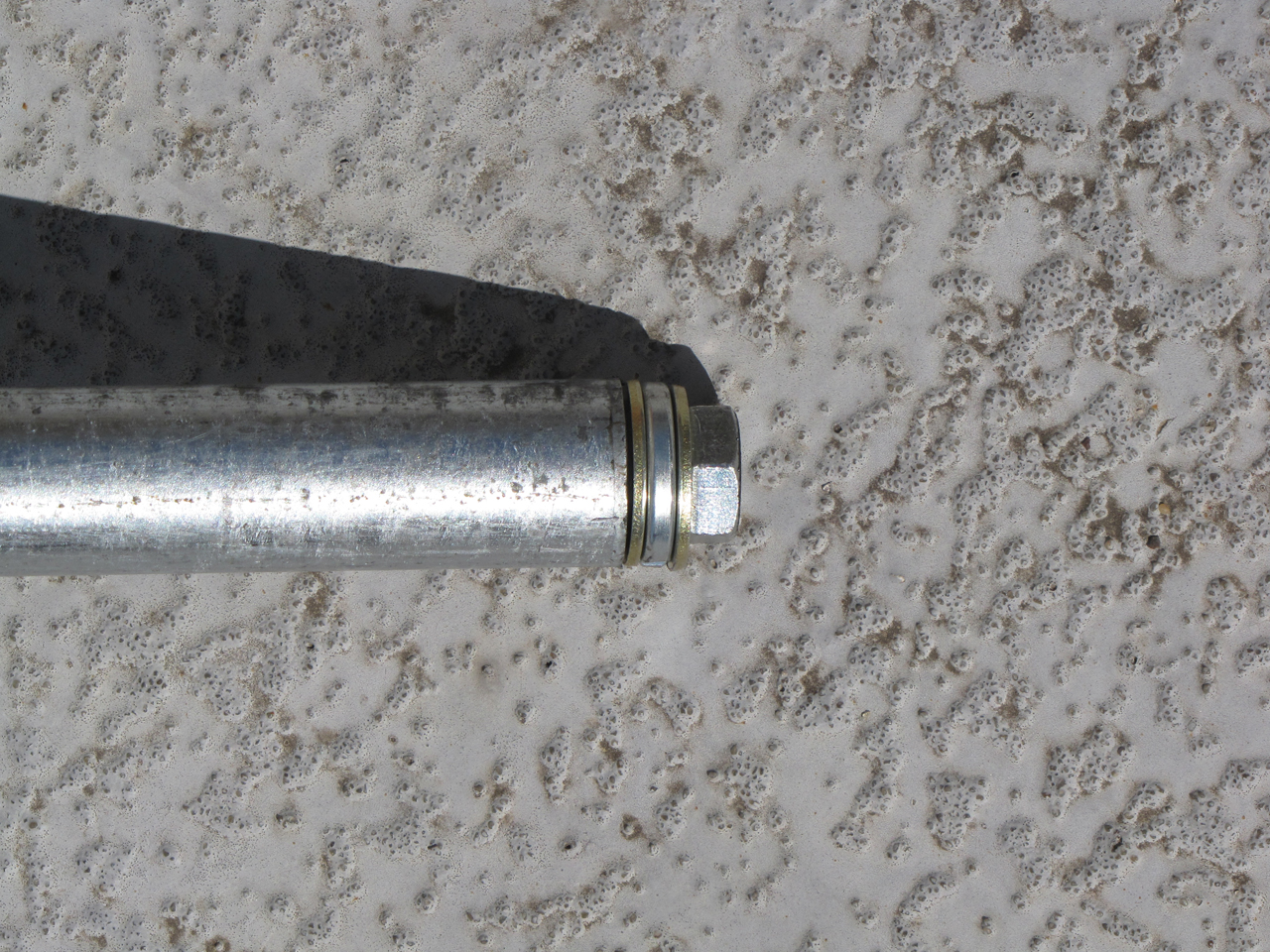
The cast seat includes a hole with a square neck for a carriage bolt. I used a 2-inch galvanized carriage bolt threaded 1/2x13, which is butted onto a length of 1/2x13 all-thread with a coupling nut. The nut and the all-thread run inside the pipe, which has the threaded end secured to a matching galvanized floor flange to provide lateral support between the bottom of the seat and the shaft. Note that the screw holes in the flange are empty--it's not actually attached to the seat bottom in any direct way. The bottom of the pipe, that fits inside the chair, is closed with a 1/2x13 x 1" hex bolt that mates to the internal all-thread with a second coupling nut. A 1/2" lock-washer sandwiched between two flat washers provides tension to keep things from vibrating loose. Note that the outer diameter of all the washers has to match that of the pipe to fit inside the chair base. A standard 1/2" split lockwasher is perfect, but the flat washers are "USS pattern," which means the OD is smaller than a standard 1/2" flat washer.
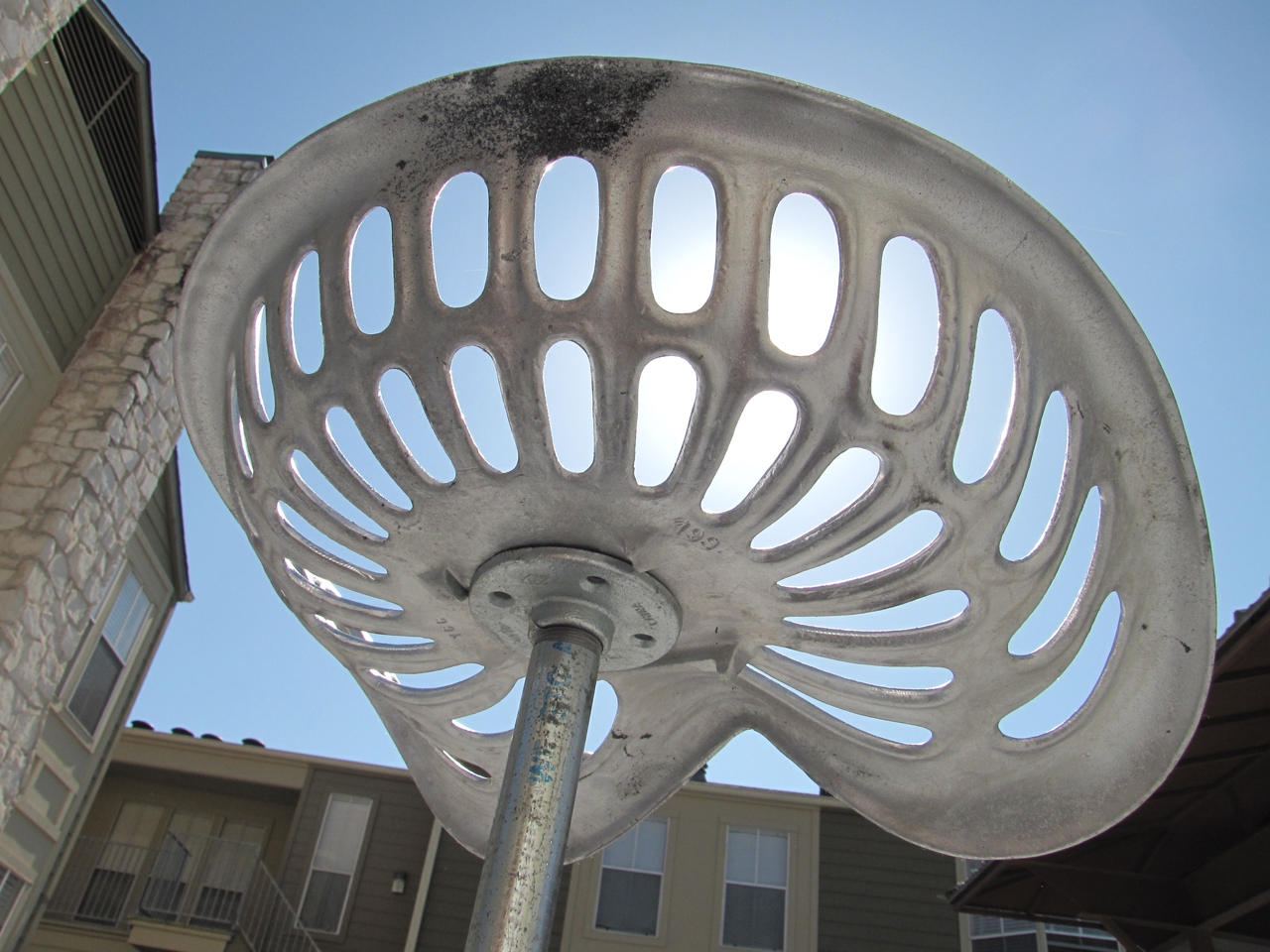
last modified 2010-04-28